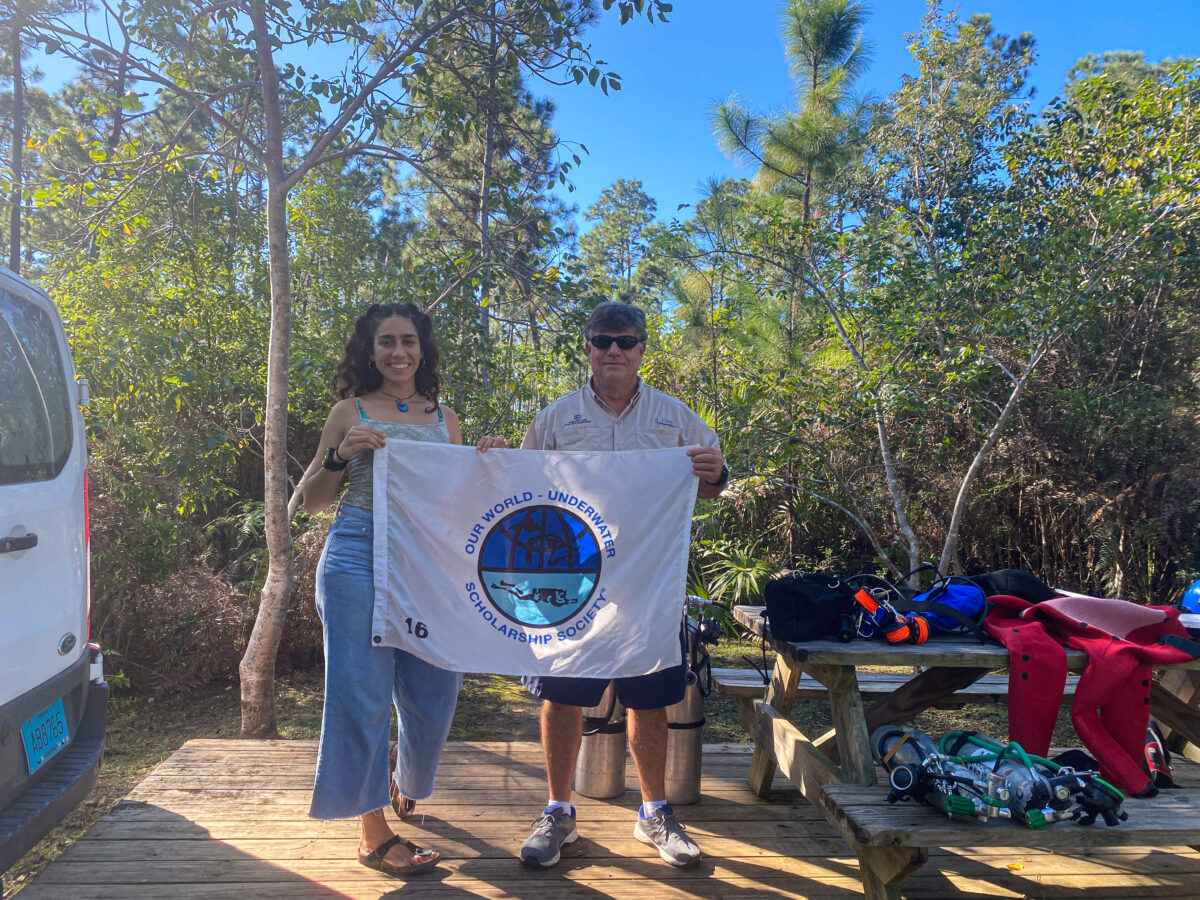There are times in your life when new worlds are opened. New worlds you didn’t even know you would love and yet there they are, waiting to be discovered. When I first dove in the ocean, that was one of them. When I first entered a cave, there it was again. That sense of magic and wonder, of a door forever unlocked.
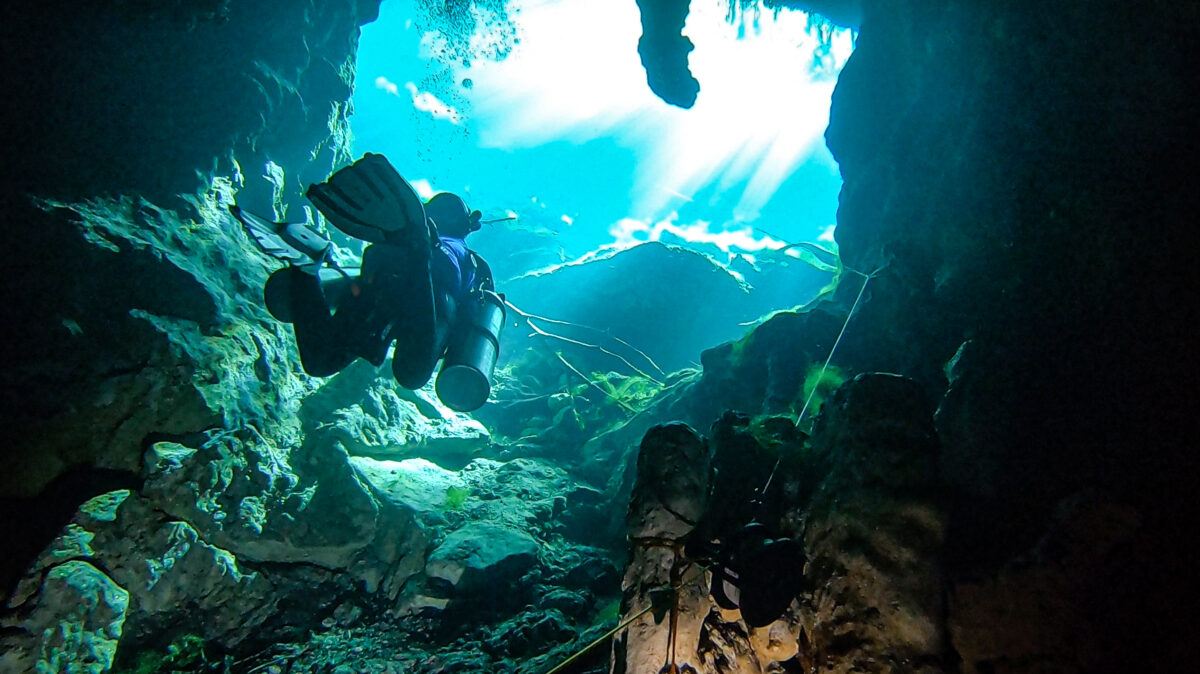
Before going for my first cave dive, my instructor Brian described the Abaco caves in detail to me, describing them as some of the most beautiful caves in the world. I was very lucky to learn to cave dive there. I asked him jokingly, “am I going to come out of these caves a changed person?” and he said, “you just might.”
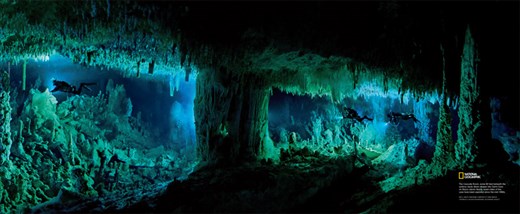
When I was first approached about cave training, I wasn’t sure if I wanted to try it. I always thought caves were terrifying and didn’t know anyone who dove them. All I knew were the stories of divers getting lost in caves. But as the scholarship exposed me to the worldwide dive community and I was introduced to groups such as the Women Divers Hall of Fame, the world of possibilities for me began to expand. I took my first steps into technical diving which later led me to Brian Kakuk and the caves of Abaco in The Bahamas.
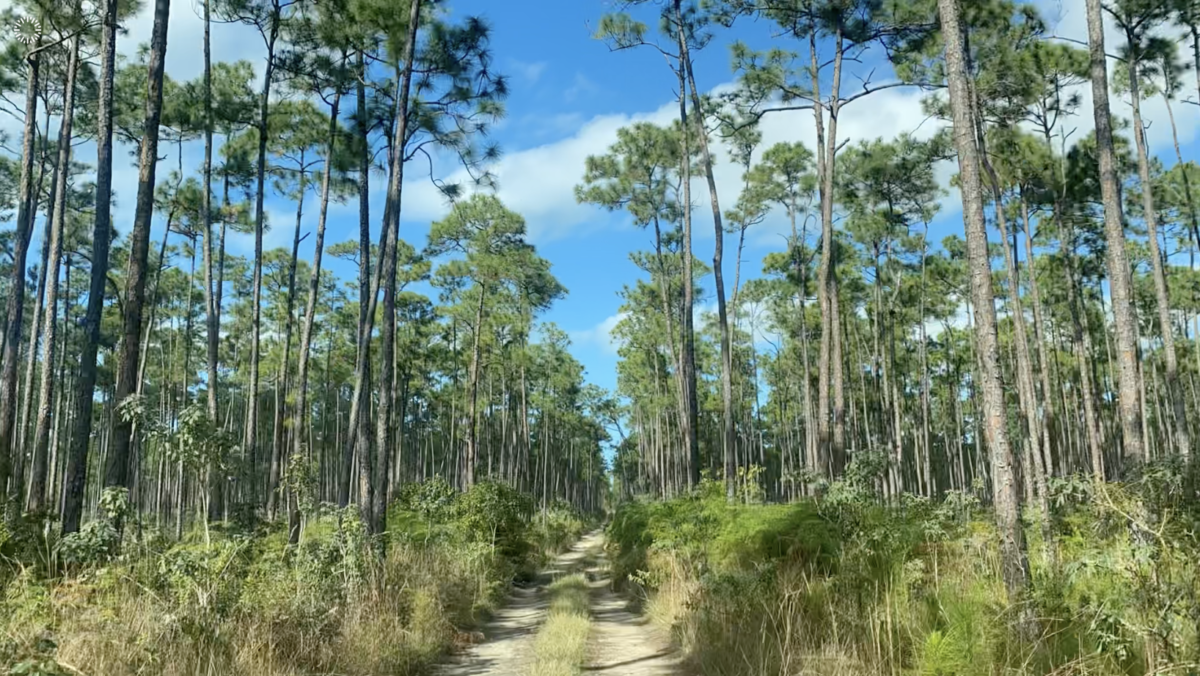
The Bahamas has been a second home for me for many years, and to be able to explore this hidden world below this beloved island chain was an exciting opportunity. Brian Kakuk is a well-known cave diver, accomplished underwater photographer/film-maker, and instructor of Bahamas Underground- Bahamas Technical and Cave Diving Adventure and Training Facility. He is also the Founder and Director of the Bahamas Cave Research Foundation. I was a little nervous about starting this program since Brian was investing a lot of time towards my training. I wasn’t sure how I would react to this entirely new experience. Brian eased these worries quickly. When chatting with him, he alleviated all pressure. He offered me the incredible opportunity to explore and see if I liked this type of diving, to try it at my own pace. No expectations.
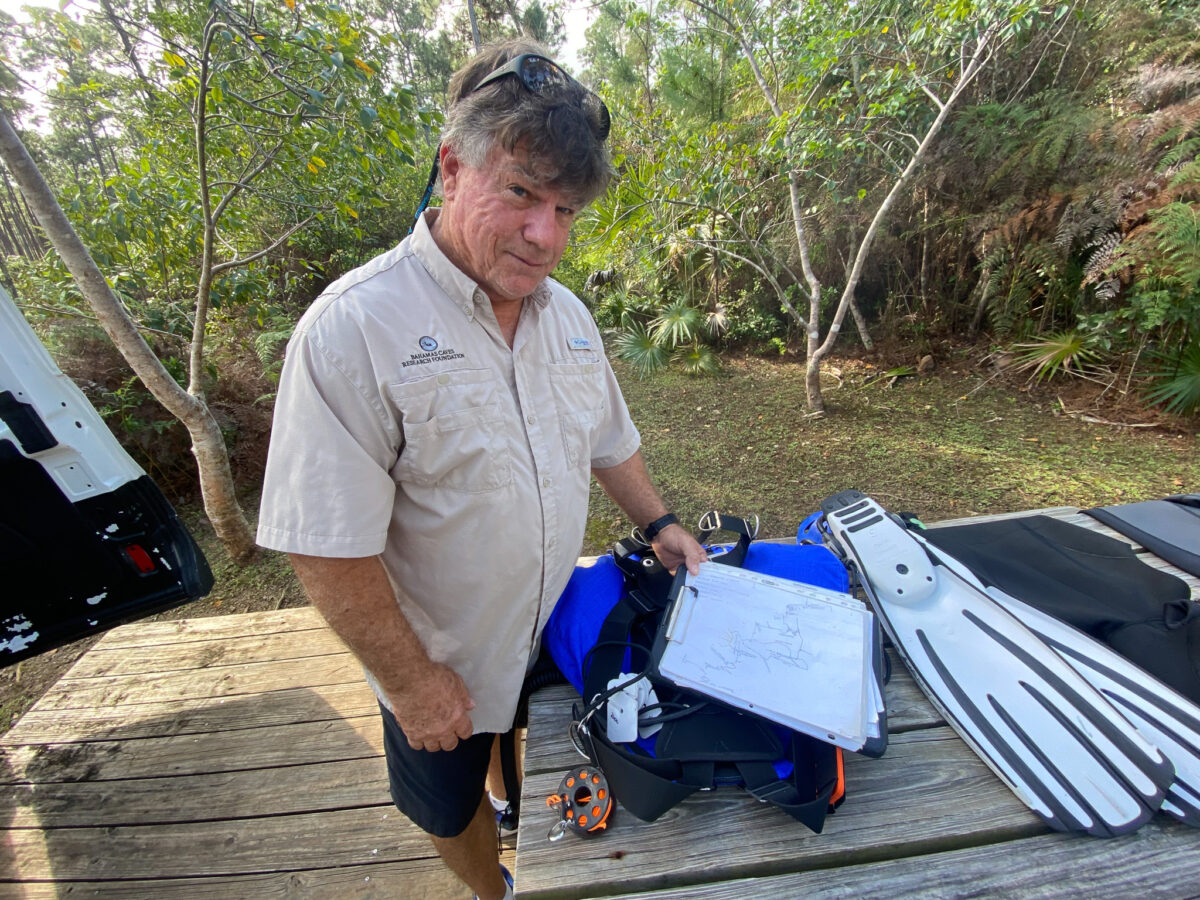
The course started off with theoretical lessons and discussing safety protocols. Since cave diving is very different from regular scuba diving, due to the lack of direct access to the surface, it was crucial that I was well acquainted with the safety protocols and redundancies used to keep cave diving safe for divers. We followed the manual set forth by the National Speleological Society-Cave Diving Section. The first few training dives we conducted were in a quarry so I could get accustomed to using a sidemount configuration. I experienced diving with doubles during my Intro to Tech course and always felt unbalanced and uncomfortable. Diving sidemount felt surprisingly natural and the skills came more easily. Brian was very attentive and helpful with this new gear configuration, increasing my comfort level quickly.

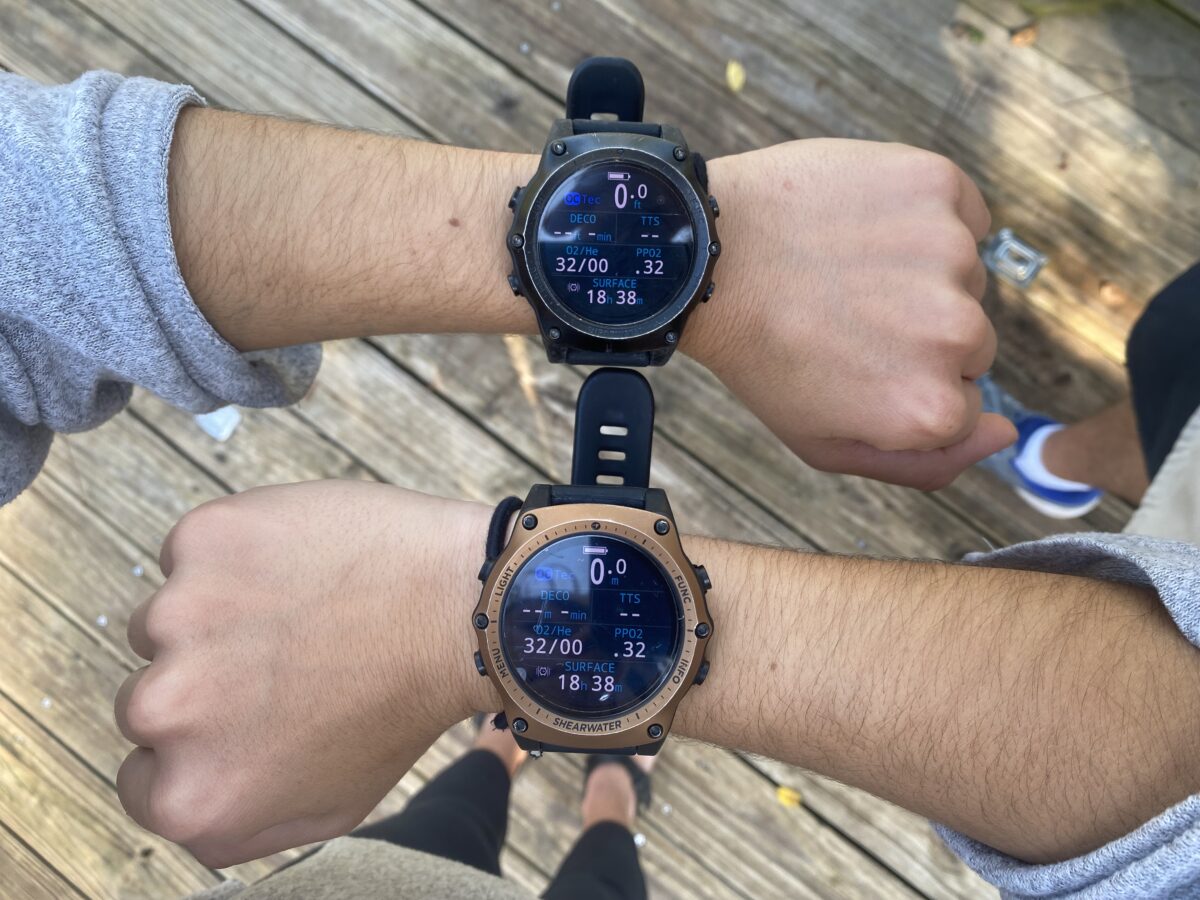
My first cave dive was an orientation to this new environment. We set up our gear at the entrance to Dan’s Cave, a small blue hole opening. As we entered the tiny water body and descended into the narrow entrance of the cave, a whole world opened up before us. Our dive lights illuminated this world as the light played off the various structures within, creating dancing shadows. Only the sound of our bubbles broke the silence and stillness within the cave. I was mesmerized. Brian led me through the cave structures. At a narrow section, he instructed me with hand signals to be careful not to bump the walls. I streamlined my body, steadied my breath and carefully navigated my way through. As I came out the other side, a giant cathedral room opened up. With structures several stories high, sculpted by millions of years of natural movement of sediment. Stalagmites and stalactites taller than me were scattered throughout. At places, they met in the middle to make towering columns resembling majestic candlesticks from a storybook. It felt like an artist had sculpted these shapes, designed with a purpose and vision in mind instead of from natural processes. The caves were so intricate, like being in a sacred space.
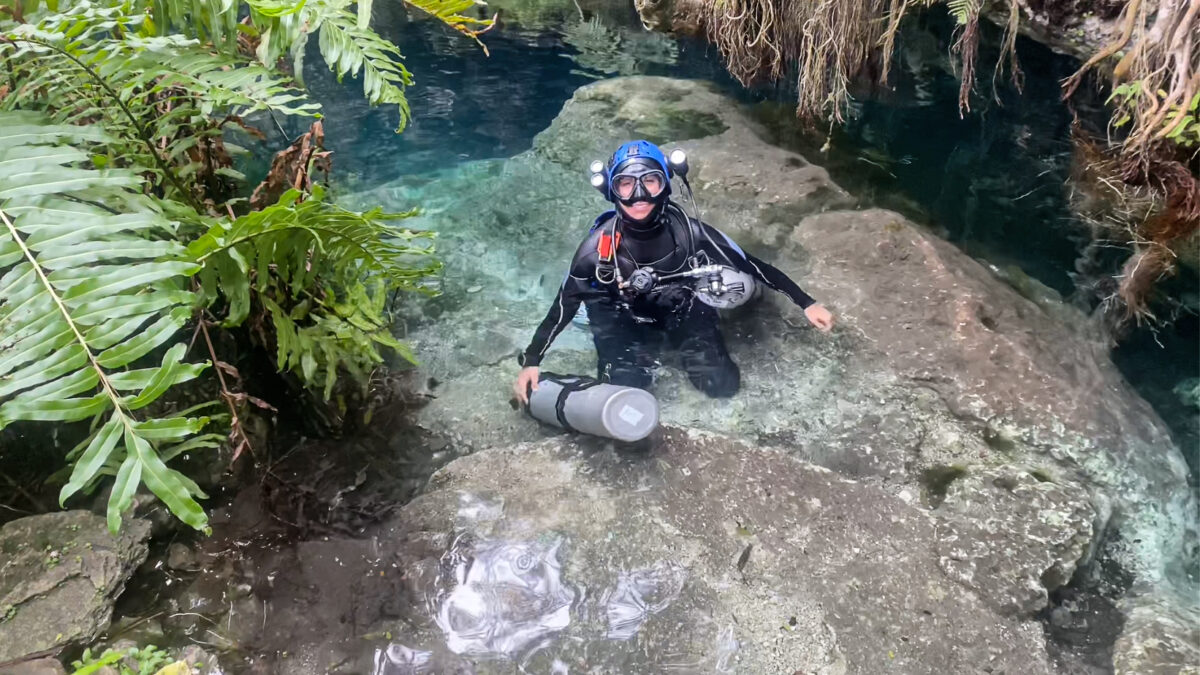
There were so many sights to take in and my eyes could hardly open wide enough to soak it all in. In this cave, we went through a halocline, an area where the freshwater meets the saltwater of the cave, a phenomenon I had never before experienced. As we passed through it, we could see the water creating ripple effects. Once under it, when I looked up, I could see waves, just like if I were to look up at the sky from under the water. Brian showed me that when you shine your lights through the halocline, light would concentrate in the infraction zone, creating a line along the sides of the wall. The visibility in the cave was so clear, we could see from one end to the other of this giant space, as far as our beams of light could reach. Despite the beauty of the silence in the cave, I couldn’t stop talking to myself underwater. Eyes wide and exclaiming “wooooooow, it’s so beautiful” over and over again. Brian could hear my little voice underwater as my eyes took in this new world. That first dive was so incredible, like being transported into a completely different world.
Throughout the training, Brian would show me small details and items in the caves. He knew the caves inside and out and took the time to share the incredible gems and details with me. He showed me how to recognize the salt stone structures and to press my light against them to create a glowing effect, just like the decorative salt stones people use for lights in their homes. One time, he showed the red Saharan dust deposits that had accumulated in the cave walls when the cave had been a dry cave. He placed a clump of red clay in my hand and showed me how to break it up to create these beautiful swirling abstract red patterns in the water. Brian continued to share his knowledge of tips and tricks. Sometimes he would stick his hand in the muck and pull out a crocodile jaw or shell from an ancient turtle that had long been extinct from these lands. Brian made the experience so special by sharing his discoveries from years of experience and exploration.

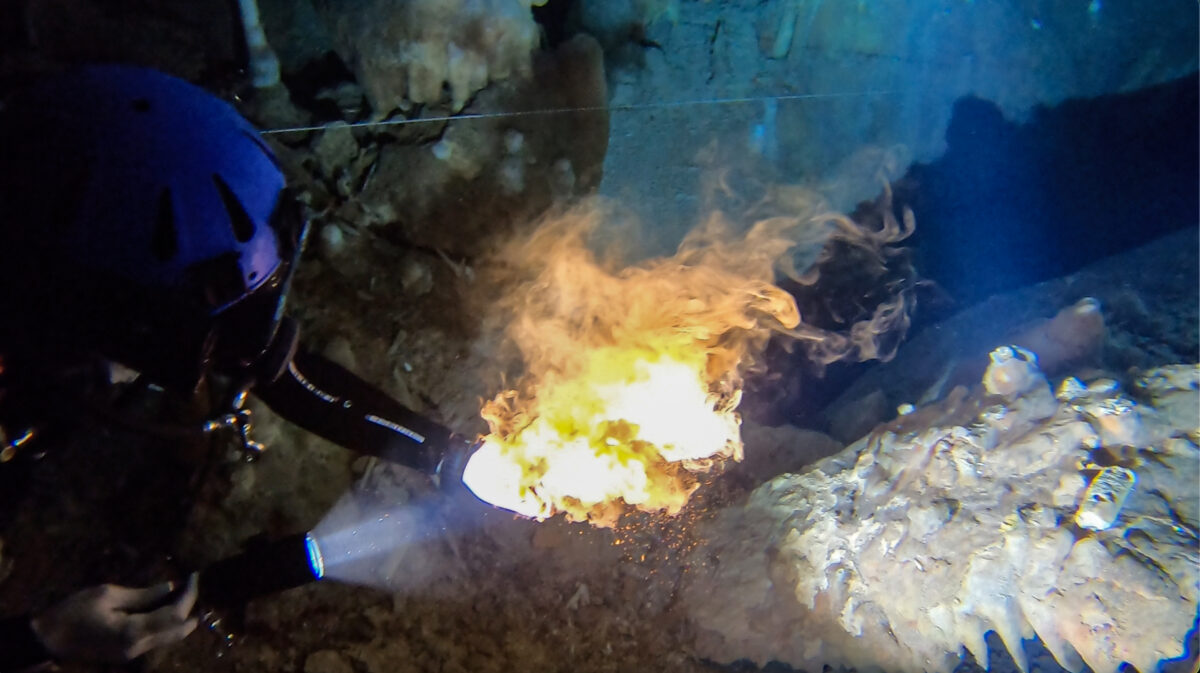
The remaining dives of the course involved learning and practicing skills and appreciating the importance and potential danger involved with entering a cave environment. Skills were step by step, building muscle memory until they were second nature. Certain dives would have a specific goal, but Brian would occasionally surprise me with other skills to encourage a good reaction in an unexpected moment. This approach honed my reflexes and strengthened a calm mental state underwater, helping me build confidence in all my diving.

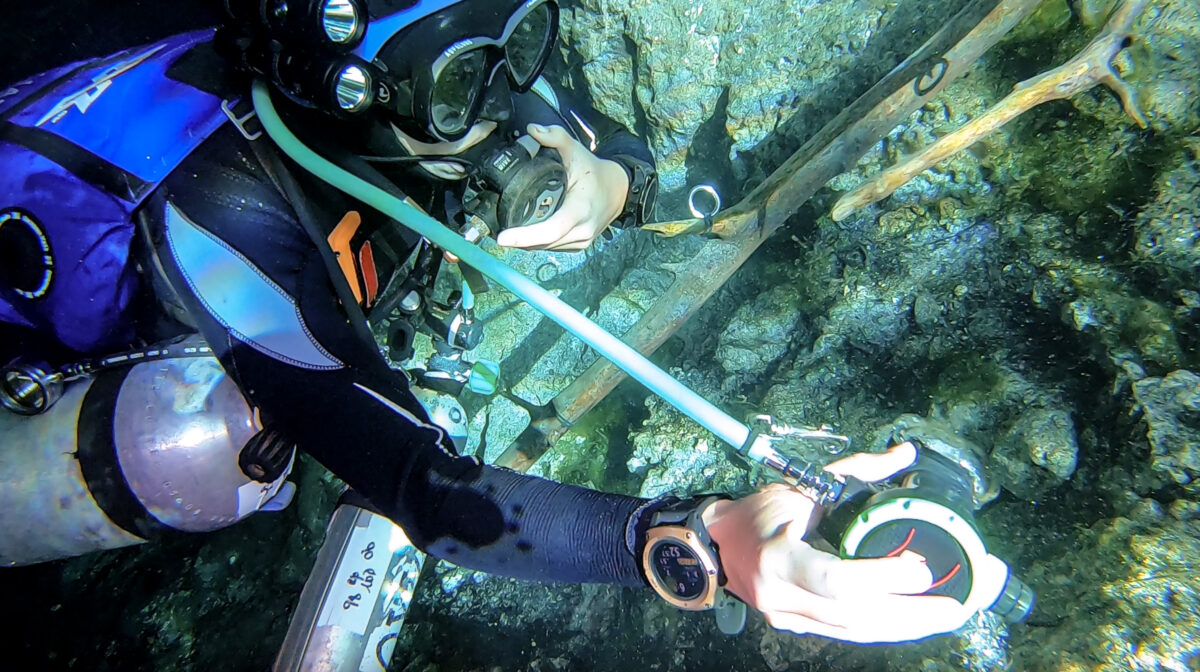
We practiced no-visibility drills, learning to find the way out without visual references. The cave line is our indisputable guideline. At no point do you stray from your guideline during a dive. Every component of training was an integral step to a larger protocol necessary for safety. For example, I learned not to rely solely on memory, but to follow meticulously the markers and steps back out. Cave diving has so much contingency planning and redundancy for everything. I carried an extra mask, extra light, two separate first stages and more to appropriately respond to any situation. It was such a different mentality from recreational diving. Taking on the additional risk required more preparation and awareness of surroundings in a disciplined manner. There is no room for big egos in cave diving. Your training and your attention to the details and the rules are what keeps you safe in this environment, allowing you to enjoy the magic of the cave.
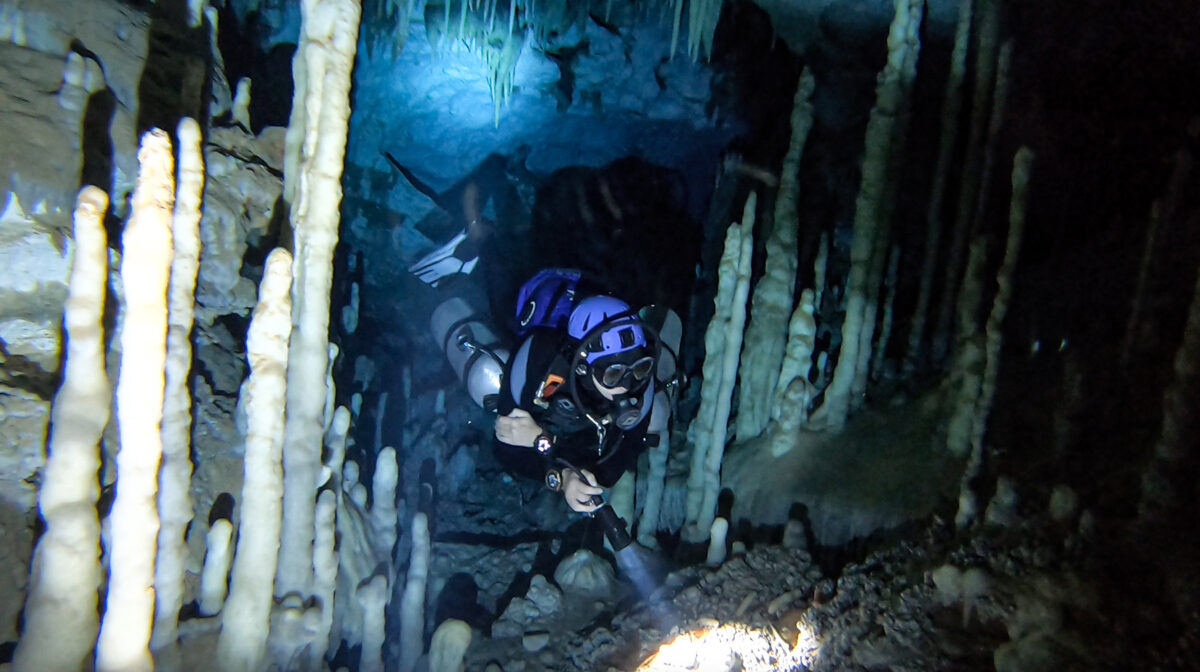
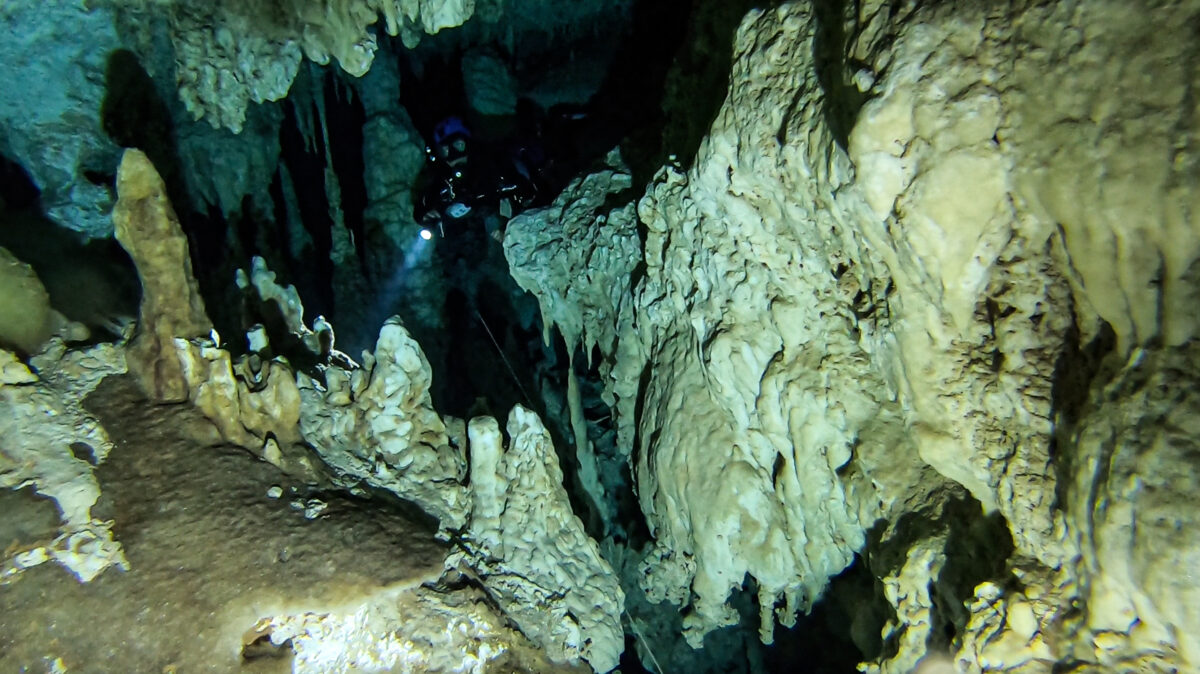

I loved the challenge of cave diving. Having to problem solve underwater was like a puzzle to me, and I have always loved puzzles. Cave diving was about patterns, and relying on your constant patterns of markers, Ts and guidelines to always find your way back. When I began the training, I was worried I would get scared in the caves, but overall I felt very comfortable. There was only one dive when we went far and deep in the cave that I felt the weight of the cave for the first time. I was so far into this underwater world that I started to feel the distance from the entrance of the cave. But I knew I couldn’t think about that. I had to rely on my training, to pay attention to my surroundings, the guideline and my markers so that at any point I would be prepared to find my way out if something went wrong. So instead of being passive on any dive, even if Brian was leading, I built the habit of counting the markers, following the guideline and testing my own awareness in the cave at all times.
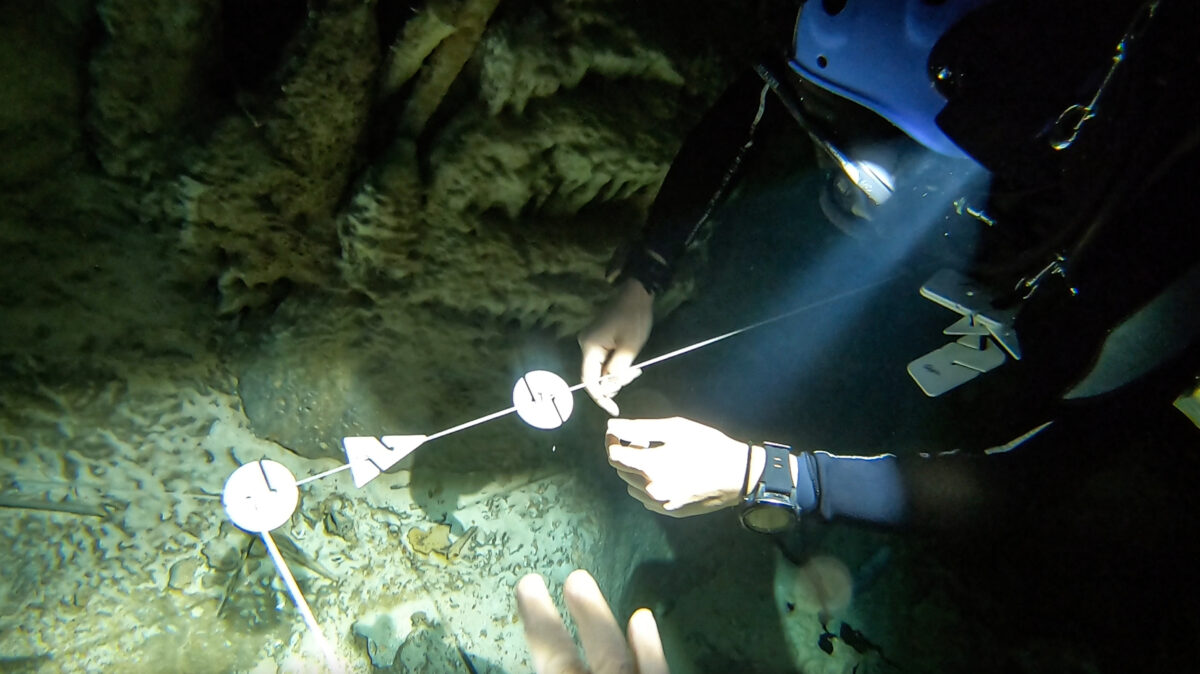

The caves of Abaco were such a dynamic and exciting world. The amazing water clarity, the variety of structures and the natural history that was written into every rock and fossil in the walls kept my attention. It was surprising, considering the lack of marine life within the cave, that such a lifeless place could have such life. The cave structures triggered the imagination, and I knew that Brian loved that about the caves too. The way he had named the various cave sections confirmed that he enjoyed imagining worlds within the caves. There was the glass factory, full of crystal roses, gems and other formations, the ice cream Factory where the walls looked like they were covered in globs of melted cream, the popcorn section, the gnomes, the badlands- full of stalactites that looked like jaws and claws and teeth, the goodlands where the ceilings were full of swirling hanging pieces that resembled chandeliers. Each section was a different world with so much room for imagination. And then coming back into the natural light, seeing the trees, sunlight and walls from down below after having been removed from it, was so magical. I wish I could have filmed and photographed the experience, but I couldn’t bring a camera when training. So instead, I captured the experience thoroughly in my memory.
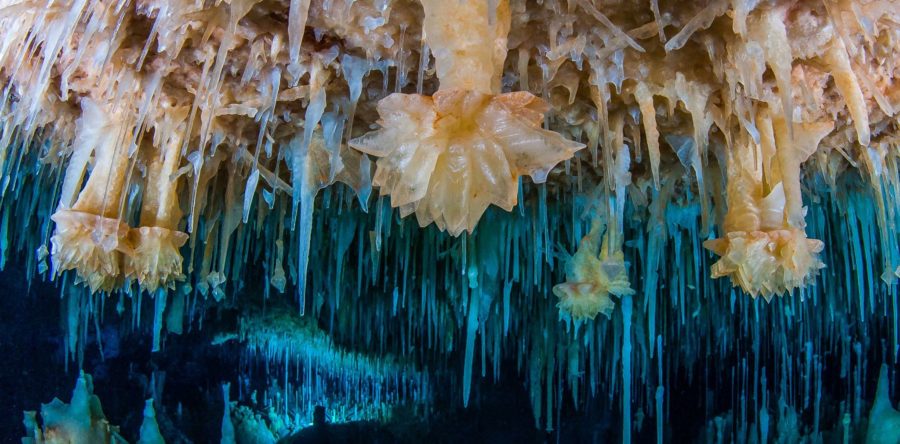
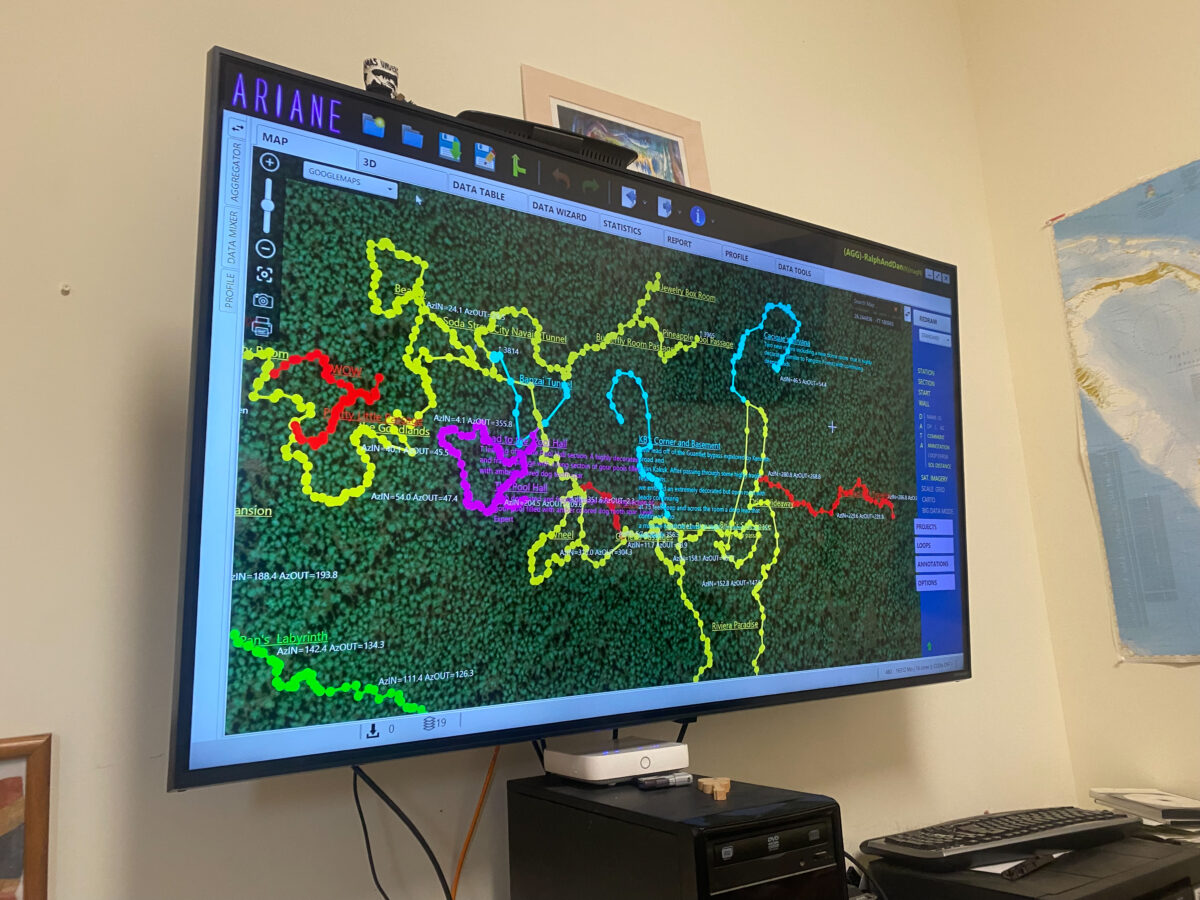
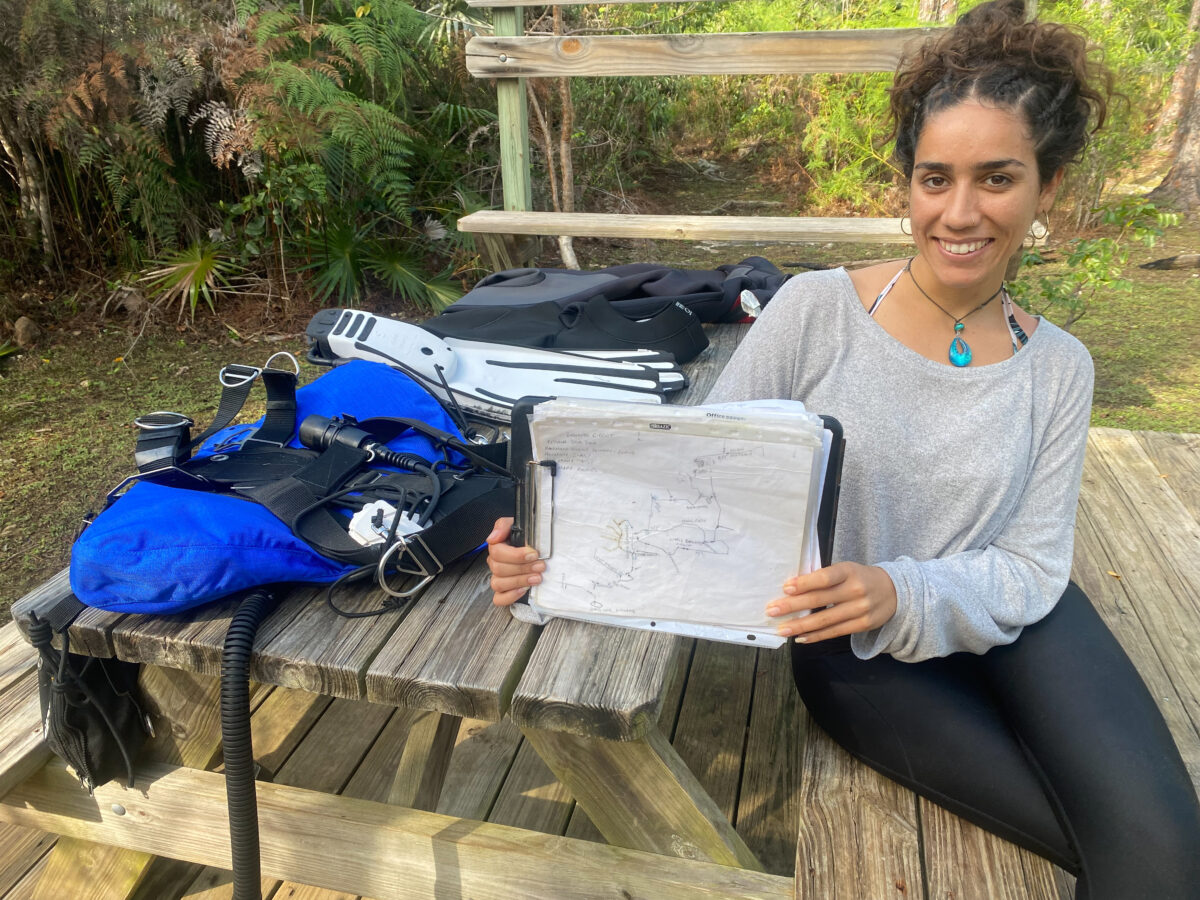
Diving caves was truly inspiring. I can understand the allure of exploring caves now. Brian was such an amazing person and guide who directed me so skillfully through the caves to get a full experience. He has done extensive mapping and research of these caves and is the person to guide those interested in exploring further. I left Brian with this little painting to remember the beautiful experience.

I definitely want cave diving to be something I continue to do in my life, and I was so glad to have made it through both my Apprentice Cave Diving course and my Full Cave Diving Course with Brian.
Thank you to Brian Kakuk and Bahamas Underground for this incredible training experience. Also a huge thank you to Rolex, Our World-Underwater Scholarship Society, Divers Alert Network, and my product sponsors Aqua Lung, Diving Unlimited International (DUI), Fourth Element, Halycon, Light and Motion, Nauticam, and Reef Photo and Video for making these opportunities possible.
